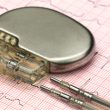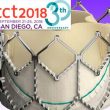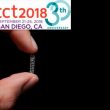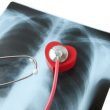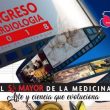This analysis shows that baseline right bundle branch block and increased PR length after transcatheter aortic valve replacement (TAVR) are independent predictors of advanced conduction disturbances requiring late pacemaker implantation. A simple electrocardiography can detect these potentially fatal conduction disturbances that might happen more than 48 hours after TAVR. Data from consecutive TAVR patients from<a href="https://solaci.org/en/2018/10/18/predictors-of-conduction-disturbances-requiring-a-late-permanent-pacemaker/" title="Read more" >...</a>
2018 Peru Sessions | Nurses and Technicians Session
As a prologue to Peru 2018 Sessions, Nurses and Technicians Sessions will be held on October 24, 2018. The event will take place at the Main Arena of the National Cardiovascular Institute (INCOR), in Lima. These sessions will be about several topics, among others, radioprotection in the cath lab, valve disease procedures, TAVR, mitral valve,<a href="https://solaci.org/en/2018/10/11/2018-peru-sessions-nurses-and-technicians-session/" title="Read more" >...</a>
TCT 2018 | PORTICO-I: One Year Follow-Up for the Self-Expandable Reposisionable Valve
This study was simultaneously presented at TCT and published at JACCE, and it aims at showing the one-year outcomes of this new TAVR device, though follow-up is at 5 years. Primary end point was all cause mortality and secondary end points included clinical and echocardiographic events. With a total 941 patients (82,4 ± 5,9<a href="https://solaci.org/en/2018/10/05/tct-2018-portico-i-one-year-follow-up-for-the-self-expandable-reposisionable-valve/" title="Read more" >...</a>
TCT 2018 | PARTNER 2 Valve-in-Valve: Clinical and Hemodynamic Results Maintained in the Long Term
The 1-year follow-up for this study was published last year in JACC, and it showed that transcatheter aortic valve replacement (TAVR) in failed bioprosthetic valves has low rates of complications, boosts significant hemodynamic improvement, and results in relatively low mortality. Now, the 3-year results are presented at TCT 2018. The study followed 365 patients who underwent valve-in-valve<a href="https://solaci.org/en/2018/10/04/tct-2018-partner-2-valve-in-valve-clinical-and-hemodynamic-results-maintained-in-the-long-term/" title="Read more" >...</a>
TCT 2018 | IMPERIAL: First Study Comparing Drug-Eluting Stents in Patients with Femoropopliteal Disease
The IMPERIAL trial compared the safety and efficacy of a nitinol self-expanding polymer-free placlitaxel-eluting stent (Zilver PTX, Cook Medical, already approved by the US Food and Drug Administration [FDA]) and a nitinol self-expanding polymer-coating placlitaxel-eluting stent (Eluvia, Boston Scientific). This was a single-blind randomized trial in patients with symptomatic intermittent claudication (Rutherford categories 2, 3, or<a href="https://solaci.org/en/2018/10/03/tct-2018-imperial-first-study-comparing-drug-eluting-stents-in-patients-with-femoropopliteal-disease/" title="Read more" >...</a>
What to Do with Blood Pressure Levels Between 130/80 and 139/89 mmHg
The decision to be made with a treatment-free patient with systolic blood pressure over 160 mmHg or diastolic blood pressure over 100 mmHg is an easy one. All guidelines agree: treatment should be started immediately alongside lifestyle changes. In the case of patients with systolic blood pressure between 140 and 159 mmHg or diastolic blood pressure between 90<a href="https://solaci.org/en/2018/09/27/what-to-do-with-blood-pressure-levels-between-130-80-and-139-89-mmhg/" title="Read more" >...</a>
Aortic Stenosis with Normal Flow Low Gradient: Should We Intervene or Wait?
Symptomatic patients with <1 cm² aortic valve area will benefit from an intervention regardless parameters such as flow and gradient, even if these are normal (or at least not severe). A valve replacement will be indicated without question (either surgical or percutaneous) in patients with >40 mHg mean gradient or low gradient justified by low<a href="https://solaci.org/en/2018/09/27/aortic-stenosis-with-normal-flow-low-gradient-should-we-intervene-or-wait/" title="Read more" >...</a>
Debris Captured by SENTINEL Devices Result Different across Different Valves
The idea behind this study is that debris can be captured in all patients during TAVR, even though we still ignore which patients would benefit more from this device. Tissue particles captured by the SENTINEL during TAVR vary from valve to valve, according to this new analysis. There are differences in size and number of<a href="https://solaci.org/en/2018/09/19/debris-captured-by-sentinel-devices-result-different-across-different-valves/" title="Read more" >...</a>
Simple Lab Tests to Better Stratify Low Flow and Low Gradient AS Patients
Combining B-type natriuretic peptide (BNP) and high-sensitive cardiac troponin T measures undeniably helps to better stratify severe aortic stenosis patients with low flow and low gradient. Many patients in these conditions clearly benefit from a transcatheter aortic valve replacement (TAVR) procedure, and for others it is simply useless, and given its high cost, better stratification<a href="https://solaci.org/en/2018/09/17/simple-lab-tests-to-better-stratify-low-flow-and-low-gradient-as-patients/" title="Read more" >...</a>
SOLACI Symposium at AGC Cardiology Congress
We have the pleasure to announce SOLACI will be taking part in the Annual Meeting of the Guatemalan Cardiology Association with a joint symposium chaired by doctors Alfaro Marchena Noriega (Panama) and Francisco Somoza (Honduras). The event will be held on Thursday the 4th of October 2018, from 3 to 5:30 pm, at Camino<a href="https://solaci.org/en/2018/09/11/solaci-symposium-at-agc-cardiology-congress/" title="Read more" >...</a>
